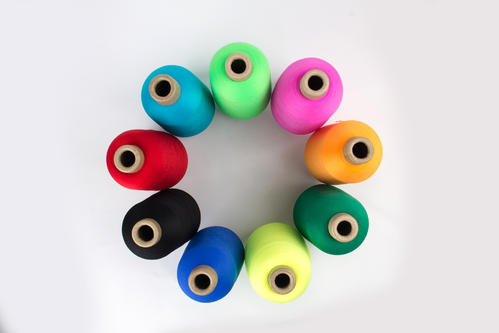Comparison between Nylon Color Spinning (Slicing Spinning) and Traditional Dyeing Silk
What are the advantages of nylon color spinning (slice spinning) compared to traditional dyed silk?
1、 In terms of cost, adding color masterbatch during spinning for colored POY, FDY, DTY, and DT fibers directly eliminates the need for later dyeing and finishing processes, greatly reducing costs;
2、 Nylon color spinning uses the technique of coloring raw materials, which integrates color and silk into one. The color fastness to sunlight and water washing is higher than the national standard level four;

3、 Due to the wide variety of colorants, coupled with high-tech ratios and complete chromatography, the colors are rich and stable, which can effectively avoid batch color differences caused by dyeing;
4、 The texture is abundant, the silk is symmetrical, full and smooth, and the hand feel is comfortable; 5、 Green and environmentally friendly, due to its clean and environmentally friendly production process, it eliminates sewage discharge. Free of heavy metals and toxic dyes, with zero methanol content, meeting domestic and international ecological textile requirements, it is an ideal environmentally friendly textile new material.
Article source: Nylon colored yarn
-
05-27
The reason why fabrics containing spandex are prone to yellowing
Spandex is a commonly used fiber variety in our daily lives, characterized by good elasticity, low fineness, high elastic modulus (cracking elongation can reach 400-800), and low specific gravity. Spa
-
04-24
Colored non dyed nylon with synthetic fiber raw material
The current conventional fiber coloring mostly uses yarn dyeing method, which has long process, high loss, high cost, and the product has color difference and low color wash fastness. Yarn is prone to
-
03-26
What are the characteristics of non dyed spandex?
Non dyed spandex has also been widely used in recent years. Non dyed spandex fiber can be blended with fibers such as nylon, polyester, acrylic, cotton, wool, etc., which can give fabrics excellent el
-
02-24
The influence of yarn structure on fabrics
The basic characteristics of yarn include its appearance and shape, twisting characteristics, fiber transfer and distribution characteristics in the yarn, as well as the surface fuzz and internal loos
